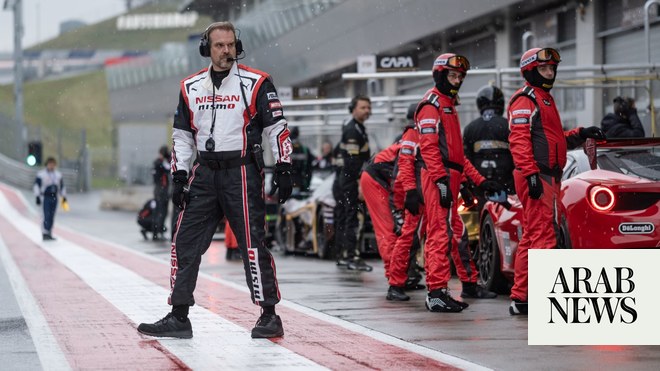
n November 2011, the arthouse Knoedler & Company – an Upper East Side mainstay and one of modern art’s most trusted and elite shops – shuttered in the middle of a show. The venerable gallery, founded in 1846, had weathered the civil war, two global conflicts, bankruptcy, the expansion of the American art market, purchase by the actor Armie Hammer’s great-grandfather, and 9/11. But in the end, it mysteriously ceased operations with little more than an email announcement.
The closure sent shock waves through the fine art establishment, a notoriously insular and opaque world, but in the days and months that followed, a trickle of press leaks revealed the extent of the damage: for 15 years, Knoedler had procured and sold at least 40 fraudulent paintings – an astounding $60m of forged work attributed to such modern American masters as Mark Rothko, Jackson Pollock and Robert Motherwell. It was, according to Driven to Abstraction, a new documentary on the scandal, “the greatest forgery hoax ever of modern American art”.
The scandal was all the more baffling given the status of the offending gallery – if you worked with Knoedler and its esteemed president, Ann Freedman, “you didn’t look at a painting and wonder whether it was a fake,” Daria Price, the film’s director, told the Guardian. “You just assumed, if it was a Knoedler, that it wasn’t [fake]. That was the atmosphere.” Driven to Abstraction explains, mostly through interviews with journalists, art observers, verification experts and attorneys, how such an esteemed gallery could steer so far awry, and for so long.
At the heart of a scandal was a remarkably homespun, given the status and moneyed anonymity of the fine art world, scheme to pass forgeries off as lost works by masters of abstract expressionism, run primarily by a Long Island woman named Glafira Rosales. An associate of Freedman’s since the gallery president took over Knoedler in 1994, Rosales was virtually unknown to the rest of the fine art dealers; it is unclear how she won over Freedman’s trust, but through a series of constantly shifting, flimsy stories, Rosales convinced Freedman of the existence of a mysterious, anonymous client – Mr X and his son, Mr X Jr, neither of whom were real. The Xs were supposedly looking to sell a trove of inherited treasures without documented provenance – they were gifts, clients were told, among other lies – which Rosales “discovered” over the course of 15 years from 1994 onward.
In truth, the works were painted in Queens by a Chinese immigrant and preternatural imitator named Pei-Shen Qian, with the alleged help of Rosales’s boyfriend, José Carlos Bergantiños Díaz, and his brother Jesús, using artificial ageing techniques such as staining the canvas with teabags to make it appear older. (Qian, who did not participate in the film, allegedly made just $5,000 per painting, and has maintained he didn’t know his paintings were being sold as genuine works of famous artists, and fled to China; the Bergantiños Díaz brothers fled to Spain; Rosales pleaded guilty to various charges, including tax evasion and wire fraud, in 2013).
The scheme outlined in Driven to Abstraction, which plays out in rhythm with the 2016 federal racketeering trial for $25m in damages levied against Knoedler by a disgruntled former client, is startlingly wide-reaching and brazen. Forged paintings on display in the gallery and private homes for years; basic questions about paper trails, origins and simple fallacies (why was a signature misspelled “Pollok”? How were some paintings crafted with materials unavailable at the time they were supposedly made?) went unanswered or ignored. The slow drip of forgeries, it was revealed, totaled an astounding $60m – and that’s just the known works.
The fraud was perpetuated, in part, by the fine art world’s fixation with anonymity and penchant for discretion; Price referenced an old saying that after drugs and guns, the art trade is the most unregulated in the world. “This is not accidental lack of transparency; this is the way they like it,” said Price. “The collectors like to be anonymous, the buyers like to be anonymous, the prices are anonymous … it all creates a world where this could happen.”
That secretiveness, and the embarrassment of the whole affair, made finding people directly involved in the case willing to speak on camera difficult. “The art world is so scared of itself,” Price said. “I always knew it was going to be a difficult film to make, because of the very secrecy that allowed the hoax to go on so long was systemic. I knew I would run up against people who just wouldn’t talk.”
Still, she said, it was surprising how people even tangentially related to the case expressed hesitation on speaking about it. “Just because they were dealers, or had to do with art fairs, just because it was such a tainted thing, there would be people who said ‘I think it’s great you’re making a film, but I can’t be in it,’” Price said.
It’s not that nobody ever saw the paintings, since several of the forged paintings showed at Armory art shows, “and it’s not even that nobody was ever suspicious,” Price added. It’s that the true extent of the fraud passed for years under the cover of a lack of inquiry. “If all the dealers and all the experts had all talked to each other and shared their feelings, maybe it would’ve been different,” said Price. “But you don’t talk about it.”
Freedman, who also did not participate in the film, vouched for the works’ authenticity until the last moment; she later claimed in an interview with New York Magazine that she was Rosales’s “central victim”, though it remains unclear how much of the fraud she knew about, and when. For the shuttered Knoedler & Company, the embarrassment caused by the scandal was protracted and costly; it took eight years for the 10th and final forgery lawsuit against the gallery to be settled in August 2019, the final chapter in the hoax saga.
Though Driven to Abstraction sticks strictly to the murky world of fine art dealing in the US, Price sees lessons in the film beyond the niche market of abstract expressionist paintings; the forgery scheme evinces what can happen, she said, in worlds predicated on anonymity, where passion and prestige can fluidly override doubt or even common sense – “the less one is entitled to tell all, the more vulnerable it is to abuses.”
Driven to Abstraction is not “getting at one final truth that wraps up neatly, but a way of telling how this evolved, how something like this could happen,” she said. “It’s not just about art – it’s about telling tall tales, and why it works.”
Driven to Abstraction is out to rent digitally in the US with a UK date yet to be announced












